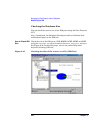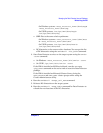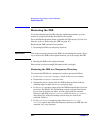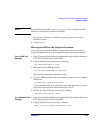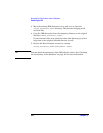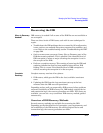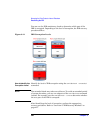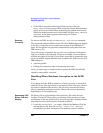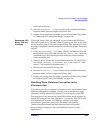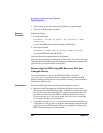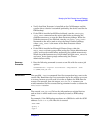
Managing the Data Protector Internal Database
Recovering the IDB
Chapter 9418
The Most
Convenient
Complete
Recovery
When the complete IDB is missing or the core part is corrupted, the
corruption level is critical. If the IDB recovery file and the original device
used for the IDB backup are available, you can perform the Guided
Autorecovery (IDB Restore and Replay Logs). Refer to “Performing
Guided Autorecovery” on page 421. Otherwise, follow one of the methods
given under “More Recovery Methods” on page 418.
The guided autorecovery method guides you through restoring the IDB
and replaying transaction logs. If transaction logs are not available, you
can still update the IDB by importing all media since the last IDB
backup.
Omitting
(Removing)
Corrupted IDB
Parts
If the identified level of corruption is major or minor (corruption is not in
the core part), you can consider omitting (removing) the missing or
corrupted parts of the IDB or perform the complete IDB recovery
instead.
When the filename tablespace is corrupted, the corruption level is major.
Refer to “Handling Major Database Corruption in the Filenames Part” on
page 423.
When the DC binary files are missing or corrupted, the corruption level
is minor. Refer to “Handling Minor Database Corruption in the DCBF
Part” on page 422.
More Recovery
Methods
These recovery procedures are adapted to specific situations. They
assume that you want to recover the complete IDB, but for some reason
you cannot perform the guided autorecovery method. The recovery
consists of restoring the IDB and updating the IDB.
Table 9-4 Restoring the IDB
Current
situation
Remark Recovery
Procedure
The IDB
recovery file is
available but
the original
device used for
the IDB
backup has
changed.
The method is essentially
the same as the guided
autorecovery method, but
less guided, and more
complex and time
consuming.
“Recovering the IDB
Using IDB Recovery
File and Changed
Device” on page 424.



